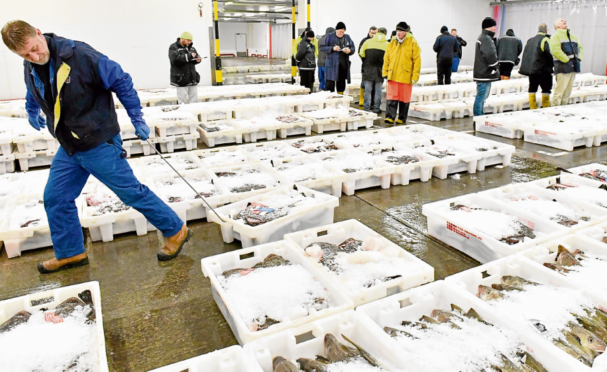Ruth Davidson and Michael Gove have teamed up to call for the UK to leave the common fisheries policy (CFP) when post-Brexit.
The Scottish Conservative leader and UK environment secretary said it is “vital” that the country regains control over its own fisheries management after it hasleft the bloc in March 2019.
The call comes as Scottish fishermen made the same demand and said they want the UK to operate as “a fully functioning coastal state” from day one following the exit.
Last night, industry chief Bertie Armstrong hailed their calls for a “fairer allocation” for the British fishing fleet.
In a joint statement, Ms Davidson – who campaigned to Remain – and Mr Gove – a prominent Leave supporter – said: “We believe it is vital we regain control over our own fisheries management.
“We want to use the opportunity of Brexit to secure a sustainable marine environment for the next generation.
“As proud Scots, we feel a particular debt to fishing communities who are looking to government to deliver a better deal for them.
“We agree we must deliver a fairer allocation for the British fleet in our own waters.
“As we leave the EU, we want the UK to become an independent coastal state, negotiating access annually with our neighbours. And during the implementation period we will ensure that British fishermen’s interests are properly safeguarded.
“The prime minister has been clear: Britain will leave the CFP as of March 2019. We both support her wholeheartedly.
“Whatever differences we had on Brexit, we both agree that our fishing industry stands to benefit from our departure from the common fisheries policy. We are both committed to doing all we can to make those benefits real.”
Mr Armstrong, chief executive of the Scottish Fishermen’s Federation (SFF), backed the move and said it was important to “to turn aspiration into action.”
He added: “As our own polling shows, Brexit presents a huge opportunity for the fishing industry, which leavers and remainers alike have urged ministers to seize.
“The challenge now is to turn aspiration into action. The government must reject out of hand the EU’s stated intention to deny the UK control of its own seas.
“Fishermen have been forced to give away too much of the fish in our waters for too long – these days are over.”
Chancellor Philip Hammond has also backed the call from his party colleagues and said fishermen will get a “better deal in the future than the one they’ve had in the past.”
The politicians spoke out as the SFF set out its “red lines” which the industry is warning the UK Government not to cross in Brexit negotiations with the EU.
It is demanding an immediate exit from the CFP in March 2019, “ensuring the EU does not have the right to grant access and set fishing opportunity and management rules within UK waters during the implementation period”.
Last week the SFF criticised draft EU guidelines on a post-Brexit fisheries arrangement to allow EU access to UK waters.
Mr Armstrong completely rejected the idea.
He said: “The days of the EU taking 60% of our fish are coming to an end. The sea of opportunity is within reach.”










